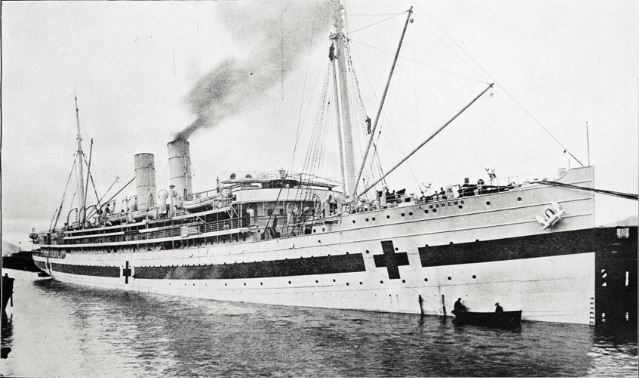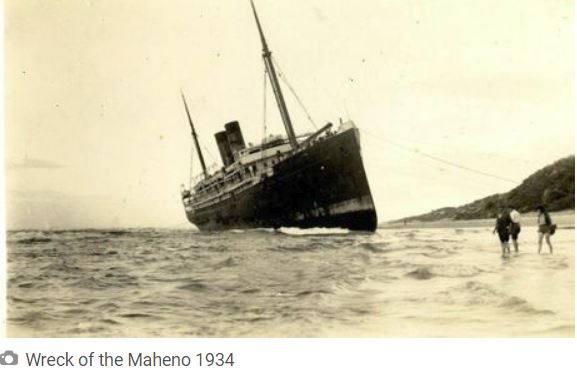HS Maheno
From Our Contribution
Contents
Remarks
Built for the Union Steam Navigation Company, she was the first turbine steamer to cross the Pacific Ocean, being used primarily on the Trans Tasman trade as a luxury passenger ship. In 1914 she was converted to fuel-oil fired and converted to be twin screw. She carried 420 passengers, 240 in first class, 140 second, and 60 third class.
In 1915 the New Zealand Government converted her to a Hospital Ship, and she spent the next five years treating and transporting Allied wounded from Gallipoli and the Western Front. Equipped with eight wards and two operating theatres, her medical team was 5 doctors and 61 orderlies from the New Zealand Army Medical Corps, along with a Matron and thirteen nursing sisters.
Maheno arrived off Gallipoli on 26 August 1915, and began loading casualties from the Battle of Hill 60. Over the next three months she carried casualties from Gallipoli to Malta. Maheno arrived back in New Zealand on 1 January 1916 to undergo a refit, before returning to Egypt in February to collect patients for transport back to New Zealand. She then sailed to the UK, arriving at Southampton on 3 July 1916, just after the start of the Battle of the Somme. Until October 1916 she operated in the English Channel, returning large numbers of wounded and sick troops from the Western Front to England. Maheno sailed back to New Zealand in December 1916, and then made six more voyages to New Zealand from the British Isles, repatriating injured soldiers.
She was returned to civilian service in 1920, but in 1935 she was sold to Japanese ship wreckers. While under tow to Japan her tow ropes broke in cyclonic weather and she was 'missing' for two days until it was found on Fraser Island off the Queensland coast in early July 1935. All attempts to refloat her failed, leaving the owners to salvage as much as they could before abandoning the wreck. During WW2 the wreck was used for bombing practice, but survived to become a tourist attraction - more than 200,00 people visit the wreck each year.

